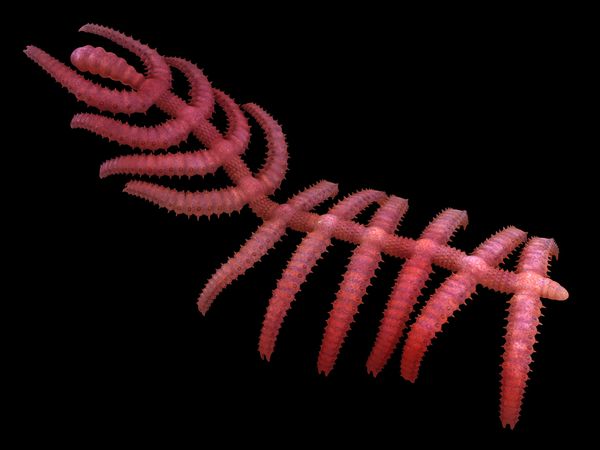New Scientist
Image: Jianni Liu
Meet Diania cactiformis, the “walking cactus”, a 520-million-year-old fossil animal that is helping palaeontologists work out how some critters first strapped on armour to defend themselves against early predators.
The number of animals with tough shells and exoskeletons exploded around 540 million years ago in the early Cambrian, probably in response to a rise in predation at the time. It was then that arthropods evolved their exoskeleton – an innovation that has helped them become the most abundant animal group on the planet, with over a million species described to date.
The first arthropods are thought to have evolved from a strange group called the lobopods – essentially soft worms with legs – which look like arthropods minus the exoskeleton. But until now, the link between the two was missing. “We didn’t have a single fossil you can point at and say: that’s the first lobopod with a simple exoskeleton,” says Jianni Liu at the Free University of Berlin, Germany. Read more on newscientist.com…








